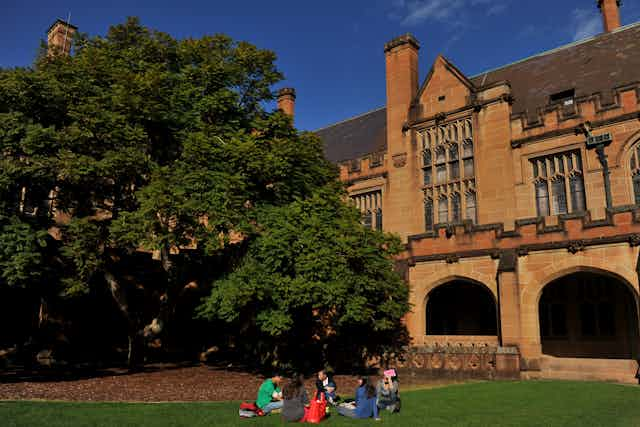Australia aspires to have some of the best universities in the world. Australians expect their universities to feature in global rankings - where there is a strong correlation between money spent and ranking achieved.
Student numbers are increasing, while Australians continue to advocate for equitable access to higher education. But, as a nation, are we prepared to pay for a world-class system?
The federal government has announced A$3.3 billion in budget cuts for the higher education sector when it already maintains a low level of funding for higher education.
Australia currently spends 0.7% of GDP investing in tertiary education, compared with the OECD average of 1.1% of GDP. Australia is ranked 33rd out of 34 OECD countries for public investment in tertiary education.
What are some of the consequences for reduced and declining government funding for Australia’s university sector? Is the traditional balance between innovative research and high-quality teaching at risk?
Implications for the sector
Diminishing government funding reduces intellectual independence and can suppress academic freedoms. Academic researchers chase money, grants and financial support in particular pathways that fit the current political climate.
The government’s recent unseemly scramble to find an Australian university for Bjorn Lomborg’s Australian Consensus Centre to attach itself to demonstrates the problematic ethical and financial implications within an intensified climate of reducing and limited funding options.
The federal government has funded the controversial centre to the tune of A$4 million. Yet the government defunded the Tim Flannery-led Climate Commission when it won office. This is an illustration of government funding leverage and redirection. Research becomes a commodity, and supply and demand mechanisms are triggered.

Government funding mechanisms are redefining the notion of the Australian academic. Among permanent or ongoing academic staff an emerging differentiation exists between research-only, research-and-teaching and teaching-only posts.
Globally oriented academics and those whose research interests and capacities align with the current mood receive research funding and are successful in the academic marketplace. This is perhaps the lesson from Lomborg’s experience of shopping his research funding to multiple Australian universities.
Research students will also feel the effects of changes to higher education funding. Under proposed changes, Research Training Scheme (RTS) doctoral students will be required to make a contribution towards the cost of their degree.
This student contribution makes up the funding shortfall due to government cuts to the RTS. HELP loans will be available so that RTS students do not have to meet these costs up front. This funding change is expected to save A$173.7 million over three years.
Low government investment in higher education also doesn’t do us any favours in terms of our position in global rankings.
Problems ahead
Access to elite education is a privilege which remains largely intergenerational. A lack of government funding eats away at the programs and institutional structures that support equitable engagement in higher education.
Applying an economic value to equity is impossible. Advocating for increased participation in tertiary education is widespread, but Australia still fails to meet the Bradley Review recommendation of 20% of all undergraduates coming from disadvantaged backgrounds.
Students become customers when government funding decreases. Under changes announced in the last budget and to be introduced from January 1, 2016, the number of places in “enabling courses” is projected to decrease from 9800 to 9700 by 2018. Universities will also no longer receive Reward Funding payments for achieving enrolment targets.
The government claims of i’t proposed changes to higher education that:
By 2018, these reforms would see the Australian government supporting over 80,000 more students as they pursue the best course for them.
But who will teach these additional students? A lack of institutional funding has prompted an increased reliance on casual and sessional academics.
Sessional academics tend not to publish, unionise nor advocate for change and improved conditions. Leading intellectual Raewyn Connell warned in 2013 that about 50% of Australian undergraduate teaching is now done by casual labour. Most sessional teachers do have not the time or connection to the university to practise innovation and critique. Our universities are poorer for it.
Is higher education no longer regarded as an important social investment? Why do the Australian voting public accept this lessening investment? Do Australian researchers and academics do enough to share and promote their work and to broadly demonstrate the value and importance of their intellectual contributions?
There is a correlation between funding and the collective research/academic profile. The effects of diminishing funding of Australian universities are troubling, and will fundamentally alter the academy.

